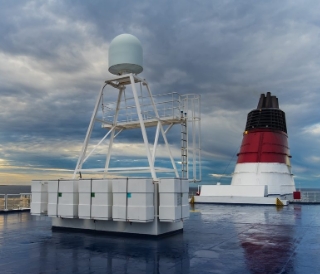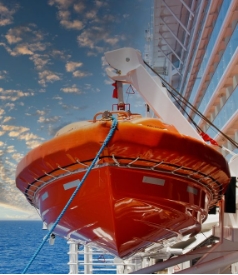Advancements in Communication and Navigation Systems for Lifeboats
Table of Contents
In maritime emergencies, lifeboats play an essential role in ensuring the safety of crew and passengers. Lifeboats, however, need more than just flotation and propulsion; they also require reliable communication and navigation systems. With advancements in technology, these systems have become more sophisticated, offering enhanced safety and effectiveness for marine lifeboats.

The Importance of Communication and Navigation Systems in Lifeboats
In emergencies, survival depends on swift and accurate location and retrieval of lifeboats. Communication systems facilitate contact with rescue teams, while navigation systems help life boat operators identify safe routes and avoid hazards. Without advanced, reliable systems, lifeboats risk being lost at sea, especially in severe weather or low-visibility conditions. Therefore, the integration of advanced communication and navigation technology is critical to improving survival rates.

Key Features of Advanced Communication Systems in Lifeboats
- Satellite Communication: Satellite-based communication allows lifeboats to send distress signals and communicate with rescue centers, regardless of distance from the shore. Systems like Iridium or Inmarsat provide global coverage, enabling constant contact even in remote areas.
- Automatic Identification System (AIS): AIS is a tracking system used on ships and lifeboats that automatically transmits the vessel’s position, speed, and course to nearby ships and shore stations. This allows rescuers to pinpoint the exact location of a lifeboat in real time.
- Emergency Position-Indicating Radio Beacons (EPIRB): These beacons transmit a distress signal on specific frequencies to global satellites, alerting nearby vessels and coastal search-and-rescue teams of the lifeboat’s position.
- Digital Selective Calling (DSC): DSC, a standard feature in marine VHF radios, allows users to send a distress signal with a single button, immediately alerting other vessels and rescue stations within range.
- Intercom Systems: For larger lifeboats, internal communication is essential. Advanced intercom systems ensure that all passengers and crew can receive instructions and stay informed throughout the rescue process.

Navigation Technology for Enhanced Safety and Precision in Lifeboats
Equipped with modern navigation systems, life boats can avoid dangers and improve route planning, which is crucial in situations where the main vessel is compromised.
- Global Positioning System (GPS): GPS is fundamental in lifeboat navigation, offering real-time position data to guide operators and rescuers. Advanced GPS models provide precise location details and can link with other navigational aids for route planning.
- Radar Systems: Radar helps lifeboats detect and avoid obstacles, especially in poor visibility conditions. It also allows operators to keep track of other vessels nearby, which could either be hazards or potential rescue assets.
- Electronic Chart Display and Information System (ECDIS): This digital charting system provides a navigational map with real-time updates, helping lifeboat operators plot safe courses and avoid dangerous areas. ECDIS can be connected to GPS to show exact positioning on a detailed chart.
- Gyrocompasses: Gyrocompasses, which are less prone to magnetic interference than traditional compasses, provide reliable directional information. Many advanced systems integrate with GPS and ECDIS for enhanced navigational accuracy.
- Sonar and Depth Sounders: In shallow or unfamiliar waters, sonar and depth sounders help prevent groundings or collisions with underwater obstacles, ensuring safer navigation paths.

Integration of Communication and Navigation Systems in Lifeboats
This integration of systems helps create a highly responsive, efficient and safety-focused communication and navigation setup, significantly enhancing lifeboat operations during rescue missions.
| Feature | Description | Benefit |
| Multi-Functional Displays (MFDs) | Combines GPS, AIS, radar, and charts into one display. | Centralized information for improved awareness. |
| Touchscreen and Smart Interfaces | User-friendly controls for quick access to navigation and communication tools. | Simplifies operation under stressful conditions. |
| Real-Time Data Sharing | Continuous data exchange with rescue centers and nearby vessels. | Faster response times and better coordination. |
| Automatic Distress Alerts | Sends automated emergency signals with precise GPS location data. | Quick localization by rescuers in emergencies. |
| Navigation-Assisted Communication | Syncs communication with navigation, automatically including location in messages. | Accurate and efficient communication. |
| Radar and Obstacle Detection | Radar displays nearby objects and obstacles, integrated with AIS. | Enhances navigation safety, especially in low visibility. |
| Weather and Environmental Updates | Provides real-time weather and sea condition updates. | Aids in route planning and avoiding risky areas. |
| Predictive Maintenance Alerts | Monitors system health to alert operators of potential issues. | Ensures reliability of critical equipment. |
| Battery Management and Power Optimization | Manages battery use with backup power options like solar charging. | Prolongs system functionality in long rescues. |
| AI and Autonomous Navigation Features | Uses AI to suggest optimal routes based on environmental data and safety considerations. | Safer, more efficient navigation with minimal manual input. |

Future Trends in Communication and Navigation Systems for Lifeboats
- Satellite-Based Real-Time Tracking and Communication: Next-generation satellite networks, such as those from Starlink and OneWeb, promise low-latency, global coverage, allowing lifeboats to maintain constant communication with search and rescue centers and nearby vessels, even in remote areas. With high-speed data, these systems will improve the precision of location sharing and enable more reliable video or image sharing, which can be critical for situational assessment during rescues.
- Internet of Things (IoT) Integration: IoT-enabled sensors on lifeboats will provide real-time updates on essential equipment conditions, location, fuel or power levels, and environmental factors. This data can be transmitted to rescue teams, ensuring they receive crucial updates on lifeboat status, enabling better planning, maintenance, and rescue readiness.
- Enhanced Automatic Identification Systems (AIS): Future AIS technology will offer improved range, data encryption, and resilience against signal interference. These advanced AIS systems will allow lifeboats to transmit location, speed, and other critical data across greater distances, enabling better coordination in busy or hazardous waters.
- Augmented Reality (AR) Navigation Displays: Augmented reality technology is expected to enhance navigation displays, allowing lifeboat operators to visualize real-time data such as route markers, nearby obstacles, and critical information directly on a heads-up display. AR simplifies situational awareness by presenting only the most essential data, reducing cognitive load in emergency situations.
- Seamless Integration of Weather and Environmental Data: Enhanced integration with meteorological and oceanographic systems will provide lifeboats with access to up-to-the-minute weather forecasts and environmental data. This data can enable lifeboats to avoid hazardous weather, optimize routes, and improve overall safety in unpredictable maritime conditions.
- Battery Technology and Renewable Power Sources: Improved battery technology, including longer-lasting lithium-ion or solid-state batteries, will power lifeboat systems for extended durations. Lifeboats will also benefit from renewable energy sources, like solar panels, to power communication and navigation systems in prolonged rescue situations without relying solely on stored battery power.
- Integrated Voice and Data with Video Communication: With advanced satellite connectivity, lifeboats will likely support not only voice and text communication but also video transmissions. This capability allows for live video sharing between the lifeboat and rescue operators, providing better situational awareness for remote support teams.
- Enhanced Digital Distress and Emergency Signaling: The evolution of digital emergency signaling technologies will allow for quicker response times and more accurate rescues. Advanced systems can transmit detailed information, such as the number of passengers, injuries, or specific distress conditions, along with location data, aiding rescuers in preparing for targeted response actions.

In summary, the safety of lifeboats has significantly improved with the integration of advanced communication and navigation systems. These technologies provide lifeboats with the tools needed for efficient, safe marine rescue operations. Future communication and navigation advancements will transform life boats into highly connected, semi-autonomous rescue vessels, which improve their ability to communicate, navigate safely and withstand prolonged missions in challenging conditions.

